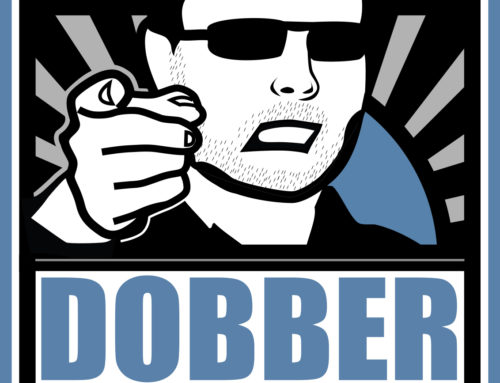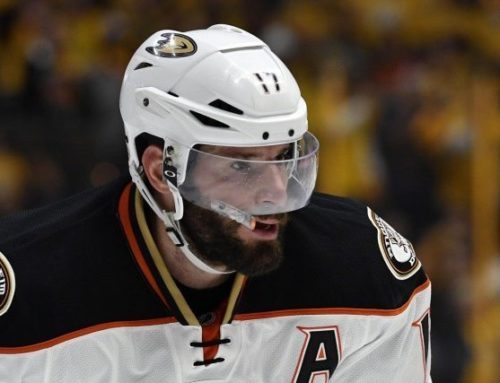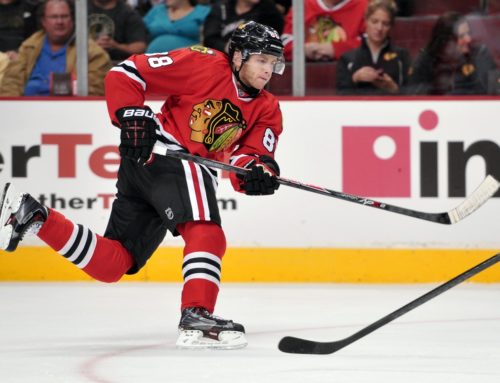
There was a thread created at the DobberHockey forums recently which questioned what strategies should be used in a one year salary cap league. I've only ever been involved in salary cap keeper leagues, but this question piqued my interest. How much of a different approach does one need to take in a one-year compared to a keeper, or is their really much of a difference at all? I'll try and pinpoint the similarities and differences, as well as distinguish a basic strategy that can be utilized in any type of one-year, salary-cap leagues.
What immediately jumps out as the biggest difference is the lack of necessity to pay attention to a player's cap hit beyond the current year. As I've discussed in past articles, long-term contracts are a keeper league team's best friend, but one of the biggest struggles is deciding when to cut bait on the high-paid, aging veterans. Giving up too early on players like Martin St. Louis or Jarome Iginla can be fantasy suicide, as it's never easy to replace a point per game player. One-year leagues eliminate this year-to-year hurdle, but it doesn't relieve GM's completely from being able to gauge a player's ability to produce in any single year. Over the years, we've seen older superstars hit an invisible wall with their production, and while it's no science, pool success will hinge on being able to gauge this occurrence. As a rule of thumb, I make sure to play close attention to these superstars around the age of 34, which seems to be an average age to see decline in a player's production. I start paying close attention to physicality and style of game, dedication to off-ice and off-season training as well as situation. Situation is key as an older player going in to a contract year is likely to find that extra gear in order to earn that nice "transition to retirement" contract. While there are fewer variables to worry about in a one-year league in terms of contract length, knowing what a player is competing for, beyond winning a cup, can affect the production you get out of that player and therefore how you should value that player.
Continuing with the age theme, youth plays a big part as GM's can save a lot of cap-space by utilizing a productive, young player who comes with a low cap-hit. I can't stress enough how important it is to know exactly how the cap structure works, as there ecan be a huge difference in cap-hit if the league follows actual paid salary (eliminating bonuses) or uses the same cap-hit the team takes. Ryan Nugent-Hopkins is a perfect example as his salary is $925 thousand, but his cap-hit is a much higher $3.775 million. Taking a risk on a first year player is much smarter, and a higher draft pick will be necessary if it's his salary that counts, rather than cap-hit. His value takes a hit in the league that counts his bonuses as there are a lot of players in that range who are much less of a risk. History tells us that a lot (if not most) first-overall picks play right after they're drafted, but success can vary. Getting Pat Kane production can justify playing a rookie at his annual cap-hit, but a Steven Stamkos type rookie season is only justified if it's his salary that counts. It's a big risk drafting a rookie, especially a 19-year old, so it's extremely important to understand exactly how your cap works, as the value of a these rookies ranges drastically based on what kind of cap-space they will eat up on your roster. Defining the right time to draft these younger players is difficult, but can be made easier by following a basic strategy.
Running a successful salary-cap team can come down to simple mathematics. Since I got better marks in sewing and cooking than I did in math, I will no longer be able to help you. I yoke – as long as the math is simple and can be done on calculator, I'll be ok. Focusing specifically on numbers (leaving it up to you to decide who is worth their money), filling your roster with the right players comes down to averages. If your league has a cap ceiling of $60 million dollars and utilized a 15-man roster, you have $4 million to spend on each spot. If they first player you draft comes with a hit of $7 million, at some point in the draft you need to find a player to make up the $3 million difference. Keep a running record of your players and their cap-hit, as well as an over/under total that will reflect either your left over space or how much over you are (based on the average).
(These numbers reflect actual NHL cap hit with a $60 million cap ceiling)
|
Player |
Cap Hit |
Over/Under |
|
1. Pavel Datsyuk |
$6.7 mil |
Avg = 8.95 |
|
2.Henrik Lundqvist |
$6.875 mil |
Avg = 8.84 |
Something to be aware is not to get scared off by your first couple of picks. All the best players go early and it's safe to say that they are going to be the highest paid players. Don't panic here, but your next pick could be one of strategy to bring you back down to more palatable position.
|
Player |
Cap Hit |
Over/Under ($4 mil avg) |
|
1. Pavel Datsyuk |
$6.7 mil |
Avg = 6.7 |
|
2.Henrik Lundqvist |
$6.875 mil |
Avg = 6.787 |
|
3.Claude Giroux
📢 advertisement:
|
$3.75 mil |
Avg = 5.746 |
Drafting Claude Giroux (averaged middle of 4th round in Yahoo pools) in the third round over other players like Getzlaf, Kovalchuk, Staal and B. Richards (all averaged 3rd round picks), is justified in a cap league. It's a jump, yes, as some poolies viewed his 4th round average as high, but it's a risk that can pay off and one that is made comfortable based on the need to come in under the cap. This team is still "over the cap," but has made a salary conscious pick that has its average cap hit trending down.
|
Player |
Cap Hit |
Over/Under ($4 mil avg) |
|
1.Henrik Lundqvist |
$6.875 mil |
Avg = 6.787 |
|
2.Pavel Datsyuk |
$6.7 mil |
Avg = 6.7 |
|
3.Claude Giroux |
$3.75 mil |
Avg = 5.746 |
|
4.Jonathan Quick |
$1.8 mil |
Avg = 4.7 |
|
5.Patrick Sharp |
$3.9 mil |
Avg = 4.605 |
|
6.PK Subban |
$875 thou |
Avg= 3.983 |
Drafting a second goalie so soon after drafting your first isn't for every GM, but in a situation where the production/cost ratio is so high, an exception can, and should, be made for a player like Quick. His cap-hit immediately drops your team average to well within reach of what you need, and also makes up for having one of the highest paid goalies in the league on your roster. Patrick Sharp is simply a fantastic bang-for-buck player who holds your average well. Moving to a player like Subban in the 6th round may be a stretch, but his potential production for under a million bucks is a risk worth taking. Your team now sits comfortably within the salary cap at this point, and you may have a big advantage over your opposition if they haven't taken the time manage their draft they way you have. Being aware saves you from scrambling later on and filling your roster with stop-gaps rather than productive players.
It's up to each GM to decide which aging vets and young stars are either able to still produce, or ready to step up production. Utilizing the above strategies can you help you decide which of these players should be drafted based on the structure of your salary cap, and what kind of value should be placed on them in terms of draft rankings. Obviously, a lot of cap leagues will be set up differently and those that have lower ceiling will see a bump in value of the PK Subban's and Tyler Ennis'. Either way, always be aware your cap situation as you draft; the longer you wait to fix a cap issue, the more difficult it becomes as the pickings become slim. Having the available cap space at the end of your draft is a huge advantage as you get to pick the players you want, rather than the players you have to.






 ANA
ANA UTA
UTA MIN
MIN CAR
CAR MTL
MTL NYI
NYI VGK
VGK DET
DET S.J
S.J
